Making Magickal Incense
Karen Charboneau HarrisonShare
© Copyright 2023 Karen Charboneau-Harrison, All Rights Reserved.
The use of incense is as old as mankind. It has been used in religious and magickal practices in all cultures. Incense has always been associated with magick and for good reason. Although Witches have known for many centuries that herbs, resins and oils carry with them their own vibration which attracts sympathetic events and/or people, science has just recently proven that this 'folklore' is true. It has been established that the scents of specific herbs and oils stimulate a predictable response in the brain receptors - whether it be sexual, meditative, aggressive or relaxing.
The smell of ritual incense as it burns works directly on the subconscious mind, helping the magickian to focus on the work at hand and direct the energies. Burning incense represents the elements Fire and Air. The smoke can be used to send the magickal energy forth via visualization and focus, or, by writing the desire on a small piece of parchment which is then burned in the thurible along with the incense.
Ritual incense should be composed of natural, non-synthetic ingredients - herbs, resins and essential oils. The herbs, resins and essential oils should all correspond to the energies sympathetic to the types of energies to be raised during a ritual. For example, if a ritual for psychic development is to be performed then something like a Moon incense should be used since the Moon rules the psychic realms. The ingredients of the incense should be those of a lunar nature such as white sandalwood, cucumber and water lily. A Success incense should be made from Sun herbs, the planet of success and personal power or perhaps a combination of Sun and Jupiter ingredients since Jupiter is the planet of authority and expansion.
The ability to compose an incense which will stimulate the desired response is both an art and a science. You must be familiar with the planetary symbology and meaning of each herb or oil, the planetary affinities of the ingredients you plan to use and with the phase of the moon so that you can take advantage of the lunar tides as part of the energy or power of your incense. Learning all of these correspondences and then being able to apply them confidently takes many years of study and practice. But the application of your study is very satisfying when you can make a special incense for a ritual which fits every aspect of your rite perfectly.
Natural, loose incense which is burnt on incense charcoal is a combination of dried herbs, flowers, gum resins and essential oils. The essential oils and gum resins are the ingredients which give the incense most of its scent; the dried herbs and flowers provide an attractive base and additional energy/planetary vitality. These natural ingredients may be obtained at your local health food store, at your favorite occult shop or through a mail order supplier.
The composition of incense is not difficult and can be done with a minimum of equipment and space. All that is required is a mortar and pestle to crush and mix the ingredients and, of course, the herbs, gums and oils. A mortar and pestle can be found at your pharmacy, health food store or occult supply.
When you make your incense be aware of the moon phase, the planetary affinities of your ingredients, the planetary day and, if you want to be very precise, the planetary hour so that all of the components of your mixture will enhance your magickal operation.
Developing your own formulas is part of the fun of incense composition. To give you an idea of the possible combinations and to illustrate the process of making incense, we will use a recipe for Mercury incense.
Gather together your mortar and pestle, ¼ ounce powdered cinnamon, ¼ ounce lavender flowers, ¼ ounce finely cut licorice root and one dram of cinnamon oil. Pour the cinnamon, lavender flowers and licorice root into your mortar and pestle and begin crushing and blending the herbs thoroughly with your pestle. When they are as fine a consistency as possible, add 20 drops of the cinnamon oil and mix again. If you like the smell of lavender you can add 20 drops of lavender oil as well. Set the mixture aside for at least 12 hours to allow the oils to completely permeate the herbs and to let the scents combine.
You will need incense charcoal upon which to burn your incense. Be careful not to completely cover the charcoal with the incense or you will smother it and put it out. About a baby teaspoonful is the perfect amount. If you prefer self-igniting incense which burns without a charcoal, add 2 teaspoons of potassium nitrate (also known as salt peter) and distribute the powdered potassium nitrate evenly through your incense. Potassium nitrate will cause your incense to burn unevenly if not distributed thoroughly throughout the incense and may 'spit' sparks.
If you store your incenses in small glass jars out of the sun and away from a heat source (a closet is perfect, or inside a drawer), it will last for several years. Happy mixing!

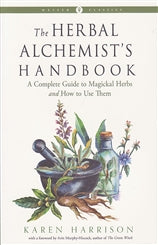 Herbal Alchemists Handbook
Herbal Alchemists Handbook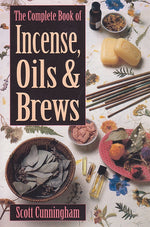 Complete Book of Incense, Oils and Brews
Complete Book of Incense, Oils and Brews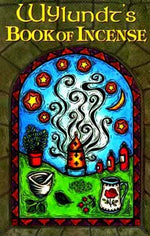 Wylundt's Book of Incense
Wylundt's Book of Incense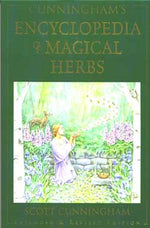 Cunningham's Encyclopedia of Magical Herbs
Cunningham's Encyclopedia of Magical Herbs Deluxe Essential Oil Sampler
Deluxe Essential Oil Sampler Basic Herbal Sampler
Basic Herbal Sampler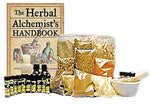 Deluxe Essential Oil and Herbal Sampler
Deluxe Essential Oil and Herbal Sampler